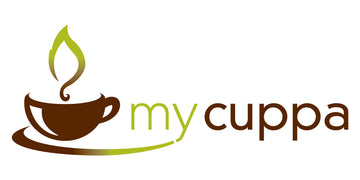Roasting coffee for espresso versus milk
In 2012 - 2013, the Australian specialty coffee industry was distracted by the ongoing debate about the best way to roast coffee for espresso beverages.
The major distraction was, of course, the different disciplines for roasting coffee used in a milk-based beverage versus a purist espresso.
The reason for this paradox was that some of our cafe customers thought that offering a mind-blowing espresso beverage was the way to success for their cafe.
They couldn't see the elephant in the room here - most of their customers wanted the best milk-based coffees, not a better-tasting espresso.
No matter how hard I tried, roasting thousands of batches, I could never please everyone simultaneously.
The moment we nailed espresso roasts, it became less exciting in milk.
Similarly, when the focus was on milk, the espresso was okay but could have been better.
After seven months of bashing my head against a wall, I ultimately decided to stop listening to this really small group of espresso purists.
I had been roasting for eight years, five days a week and pushing out huge volumes of sweet and delicious-tasting coffees.
But these two difficult cafe owners, who, by the way, were brothers and always spent their time away from their cafes talking about coffee, did not fully understand the reasons why the coffees behaved differently in milk versus espresso.
They refused to accept any rational explanations.
They sat in a small minority, and despite the extraordinary lengths I went to educate them on how to adapt the extraction for espresso, they still would not get on board.
The only way I could solve this problem was to take them on a coffee tour to some of Melbourne's most highly-rated cafes to see first-hand how the differences between black and white coffees existed.
We visited five cafes over a weekend to taste their espresso and milk-based coffees.
None of these cafes could perfectly nail both simultaneously without using a different or alternative coffee for espresso.
In other words, this testing validated what I had been saying for months - the coffee is different, and so is the roast profile.
In Australia, around 87% to 92% of espresso-based coffees - whether prepared in the cafe, at home or an office coffee machine are for milk-based espresso (or dairy alternatives such as oat, soy or plant-based milk).
The cappuccino/latte/flat white has dominated the fresh coffee bean landscape.
Milk-based espresso is the majority target to aim for mass appeal (and commercial success), with most Australian coffee roasters taking a simplistic approach to focus their blend development and roast profiles towards a basic, one-dimensional objective - make it taste good in milk.
In my July 2013 article (https://www.mycuppa.com.au/july-2013), I discussed the vital role of acid in the roasting of coffee beans.
Milk applies two dominant influences upon espresso coffee - the alkaline in the milk affects the ph-balance of the beverage (softening acid), and well-prepared, textured milk will also sweeten and enhance chocolate the espresso coffee - in other words, textured milk (heated and stretched) will enhance the chocolate notes in the coffee and provide some residual sweetness to balance out any roughness in the espresso.
Most cafe-style coffees in Australia are roasted with higher acid levels, so adding milk can balance the beverage.
Cut through is a misused term - sometimes it is flavour, other times it is acid.
Higher acid from cafe-style coffee beans can be unpleasant to the non-milk espresso drinker - cafe-style coffee beans are typically roasted darker, and this darker roast depth brings taints evident in the espresso cup.
Cafe-style coffees may also have a baked attribute or experience sourness that could be more pleasant if the barista has attempted to compensate via extraction methods of grind, dose and temperature.
Some suggest no difference between espresso and milk-based drinks if the coffee has been roasted properly.
I keep seeing this repeating quote - "when you perfect espresso, the added milk will not materially change the dynamic and will only improve the cup".
However, I respectfully disagree with that oversimplified urban legend.
Sometimes, when we roast coffee specifically for espresso, it can get lost in the milk.
Similarly, if we roast the coffee for milk, the espresso may be compromised by being overly acidic or sour - depending upon the bean and the roast profile.
Some coffees can bridge that gap between milk and espresso better than others, yet for other coffees.
They will not, no matter how many different tweaks you may do to the roast profile or, as a barista, give you a perfect result across both beverages.
Recently, a few of the most respected coffee bean roasters have also confessed to having arrived at similar destinations to us - that it's either or not both.









